The most important thing to remember when asking, “how much does van life cost?” is that everyone’s van life experience is unique. Though there are some common expenses we all share, the cost of life on the road is entirely customizable.
For most aspiring van lifers, monthly costs are a huge consideration. Many van lifers choose to live in a van to cut down on monthly expenses, while others work remotely and use van life as a means of paying off debts or saving money. It can be easy to save money living in a van, but you can end up spending way more than you think if you’re not careful or don’t plan ahead.
Depending on your spending habits, the cost of living in a van will likely be at least $1,000 to $2,000 per month for single travelers, and more for couples. You can spend much more than that if you’re not careful, but it’s difficult to spend less (those van lifers that claim to be getting by on $500 per month are living very barebones and aren’t factoring in variable expenses like vehicle repairs and healthcare).
Your actual costs will depend largely on your lifestyle, needs, and travel habits. This article is a starting point for estimating your monthly van life expenses, as well as the initial start-up costs of transitioning to this kickass lifestyle.
Van Life Cost Categories

There are two main van life cost categories.
- “Start-up” van life costs – things like the cost of your van purchase and the van conversion itself, including major build components.
- “Recurring” van life costs like auto insurance, gas, cell phone service, internet, groceries, entertainment, etc.
Let’s get into them.
Van Life Start-up Costs for Getting on the Road
When evaluating start-up costs, there are a few things to consider.
How long do you plan to live van life?
If your plan involves living in a van for more than a season, it may be worth investing in higher quality (and more expensive) components in your van build. This means a higher cost of your van conversion. If you only plan on doing van life temporarily or part time, you can assess what’s worth the expense based on your priorities.
For example, do you need a built-in cooktop, or will a camping stove adequately meet your needs? Is a tankless water heater a priority, or are you okay with a solar shower and using truck stops to fill in the gaps? Do you need a full-blown van life solar electrical system, a large capacity solar generator like the Bluetti AC200P, or will a budget portable power station meet your needs?
It’s 100% possible to get by with portable and temporary solutions in your van build. If budget is a concern, don’t trick yourself into thinking you need a flashy build with all the expensive components, especially if you’re only doing this temporarily.
Read More: Build Your Van: Ultimate Van Conversion Guide for Van Life
Where do you plan to travel?
Where do you see your van life travels taking you? Are you most excited about a National Parks tour? Do you want to spend a summer in Canada? Is driving from Alaska to Patagonia on your bucket list?
Considering the specifics of where you plan to travel is more than just a practice in vision boarding. Your destinations have a big impact on the cost of parts, fuel, and van maintenance, and will also affect the costs of things like food and entertainment.
What kind of camping do you plan to do?
Where you plan to sleep overnight in your van can affect the type of rig you choose, which in turn affects your start-up costs. If you plan to stealth camp or frequent cities, investing in a newer, less sketchy-looking cargo van is a good idea. Newer, cleaner vans tend to blend in better in city settings, helping you fly under the radar.
New cargo vans can start anywhere from around $34,000 for a Dodge RAM ProMaster to roughly $55,000 for a Mercedes Sprinter. The Ford Transit van starts around $40,000 and are also very popular options.
Bear in mind that when choosing the cost of your van, the initial cost often carries over into parts and maintenance (read: Sprinters are expensive AF to fix and maintain.)
If off-gridding and camping on public lands are more in line with your vision of van life, you can absolutely go with a cheaper van, as stealth isn’t a requirement to camp successfully in those environments. Staying at free campsites and even paid campgrounds allows you to go with a rig that’s a bit more obvious, and possibly cheaper.
Buying a used camper van is an easy way to save a lot of money on one of the biggest expenses associated with van life. You can find good, used vans starting at around $5,000 on Facebook marketplace, Craigslist, or niche websites like vanlifetrader.com.
Paid build or DIY van conversion

Next to the cost of the van itself, choosing how you will outfit it is one of the biggest camper van costs to consider.
Paying a professional to execute your van build can run you upwards of $20,000 on top of the cost of the empty van, though you often get the peace of mind that comes with warranties and knowing that a professional has constructed your space with you in mind.
Make sure to carefully vet your builder and maintain a healthy skepticism about deals that seem “too good to be true.” Many people have been burned by fraudulent or inexperienced builders offering low-cost van conversions, which ultimately cost more in headaches than any potential savings.
Choosing to DIY your rig is one of the easiest ways to save money as you transition to van life. Building your own van also allows you to pace your spending and complete your build within your budget. With a little elbow grease and some research (cough, cough, our DIY van build guide) you can build your dream house on wheels without breaking the bank. DIY camper van builds can cost anywhere from $1,000 to $20,000 and up.
Splurge components vs budget-friendly options
Whether you enlist a professional or choose to build out your own van, you typically retain creative control over certain components.
I recommend creating a list of personal “must-haves” for your van to help prioritize your spending. Do you want a toilet without needing to schedule dump station stops? It might be worthwhile to drop $1,000 on a Nature’s Head composting toilet (or save money on a cheaper van life toilet option). Do you plan to camp off-grid most of the time? A hefty solar setup and LiFePO4 batteries may be steep upfront costs, but pay for themselves over time
The costs for this phase of the build are all up to you, with most nomads spending anywhere from $800 to upwards of $100,000 on luxury build-outs. The coolest thing about van life is that there’s really no “right” way to do it. Choose what’s sustainable and realistic for you and go from there.
Recurring Costs of Life on the Road
The next part is where it gets fun because recurring expenses only set in when you hit the road!
We’ve broken down the recurring costs of vanlife into major expense categories — camper van expenses, personal expenses, one-off/seasonal, and other expenses. Let’s take a closer look.
Camper Van Expenses
These expenses are the bulk of your monthly van life costs. Many van lifers liken these costs to the “rent” of living in a van, as they are the biggest monthly expenses that come with van living.
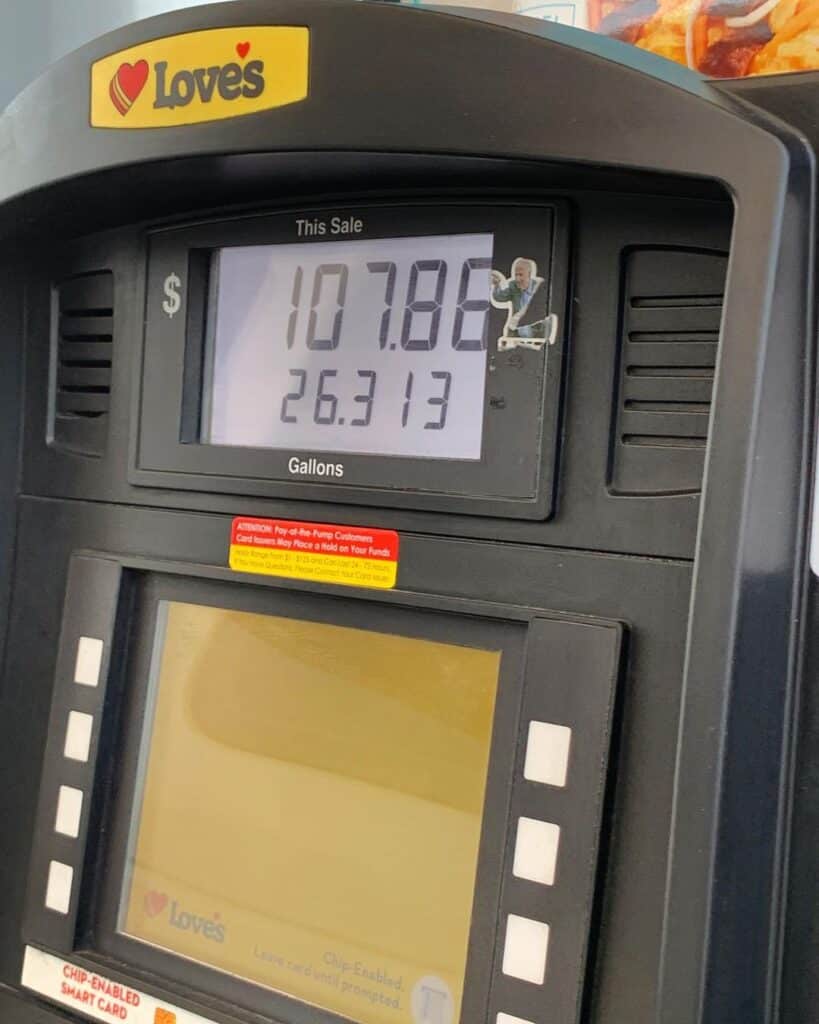
Fuel (Gas or Diesel)
Fuel is one of the most variable monthly van life costs. Fuel can run anywhere from $0 – $1000 a month, depending on the type of fuel, current gas prices, the geographic area you’re in, the season, your travel pace, and your van’s fuel economy. While you can’t control some of these things, you can always slow down or travel shorter distances to lower your gas costs, so keep that in mind when you hit the road.
Here are a few of the easiest ways to keep fuel costs down:
- Choosing a gasoline van over a diesel. Gas is almost always cheaper at the pump than diesel. However, there is a trade-off here in that diesel engines often last much longer than gasoline ones (up to 1 million miles before diesel engines need major repairs vs. less than 300,000 for gasoline) so when choosing your engine type, it’s worth to weighing the pros and cons as an investment.
- Staying away from the West Coast. Folks on the West Coast typically spend $2-4 more per gallon on gasoline than folks in the South and Midwest. This can make an extra large impact in the summer months when fuel prices trend upward across the country. The offset here is that the West Coast is home to the bulk of our nation’s public lands, which means that you can stretch your fuel by parking up and staying put for the 14 days allotted on BLM land before moving to a new spot.
- Traveling long distances in the winter vs summer. Gas prices in the US trend upward during the summer as demand increases (read: everyone gears up for the Great American Roadtrip). Saving your cross-country and international expeditions for the winter time when fuel prices are generally lower can make a huge difference in keeping expenses reasonable year-round.
- Properly maintaining your van. Vehicle maintenance plays a much larger role in fuel costs than most people realize. Basic things like tire pressure, oil life, and coolant levels all impact how hard your engine has to work to get you from point A to point B and, thus, how much fuel you go through.
Fuel for Cooking and Heating (Propane)
Propane or other cooking fuel is also one of the most common monthly van life expenses. I spend about $40 every month to fill my 12lb on-board propane tank. Some folks have larger propane tanks that cost more to refill but last longer, and others use propane alternatives like alcohol.
Similar to gasoline and diesel prices, cooking fuel costs can vary wildly from state to state and month to month, so be sure to check online and plan accordingly.
Maintenance and Parts
Maintenance and parts can also vary widely. For example, a Sprinter van is notoriously expensive to maintain, with oil changes running $200-$300 and parts for American models often unavailable (or on extensive backorder) in South America and Canada.
Newer vehicles also tend to require more specialized attention than older vans. When purchasing your van and hitting the road, consider whether or not you’d like the option to perform the maintenance on your own camper van as you travel.
Purchasing an older, DIY-friendly vehicle can not only save you money when you’re starting out, but maintenance costs about half the price or less than newer vehicles. It’s also a lot easier and cheaper to get parts for them on the off chance that you run into something you’d rather outsource to a professional.
Auto Insurance
There are a few different options for insuring a camper van, and the cost and coverage options vary.
RV Insurance can run anywhere from $100 – $200 per month. I am a huge proponent of Progressive’s “Full-Timers” package, which combines car insurance, homeowner’s insurance, and renter’s insurance to cover not only your RV (van) but also the belongings inside it. My policy runs me about $140 a month for all the bells and whistles. Other insurers like State Farm, Geico, All State, and Good Sam offer varying options for RV insurance coverage, so be sure to shop around and find the one that best fits your needs and budget.
Regular car insurance varies between $60 -$180 per month, but it only covers your van itself. This type of insurance typically won’t cover the cost of your build or your gear. And if you drive a cargo van, you may be forced onto a more expensive commercial policy (depending on the state).
Vanlife-specific vehicle insurance like Roamly offers RV insurance for your camper van. Their policies are built to accommodate full-time vandwellers, and they cover your belongings and the cost of your build. They’ll even allow you to rent your van out when you’re not using it. Because their policies are customized to nomadic lifestyles, they can save you up to 25% over traditional auto or RV insurance.
Roamly is the only insurance provider out there that's built specifically for the needs of vehicle nomads. Save money, insure the cost of your build, and stop lying to your auto insurance company.
Personal Expenses
The monthly cost of van life varies depends on how you prioritize spending. The following are some examples of common expenses in the van life community. Keep in mind that your own costs will fluctuate as you get used to van living.
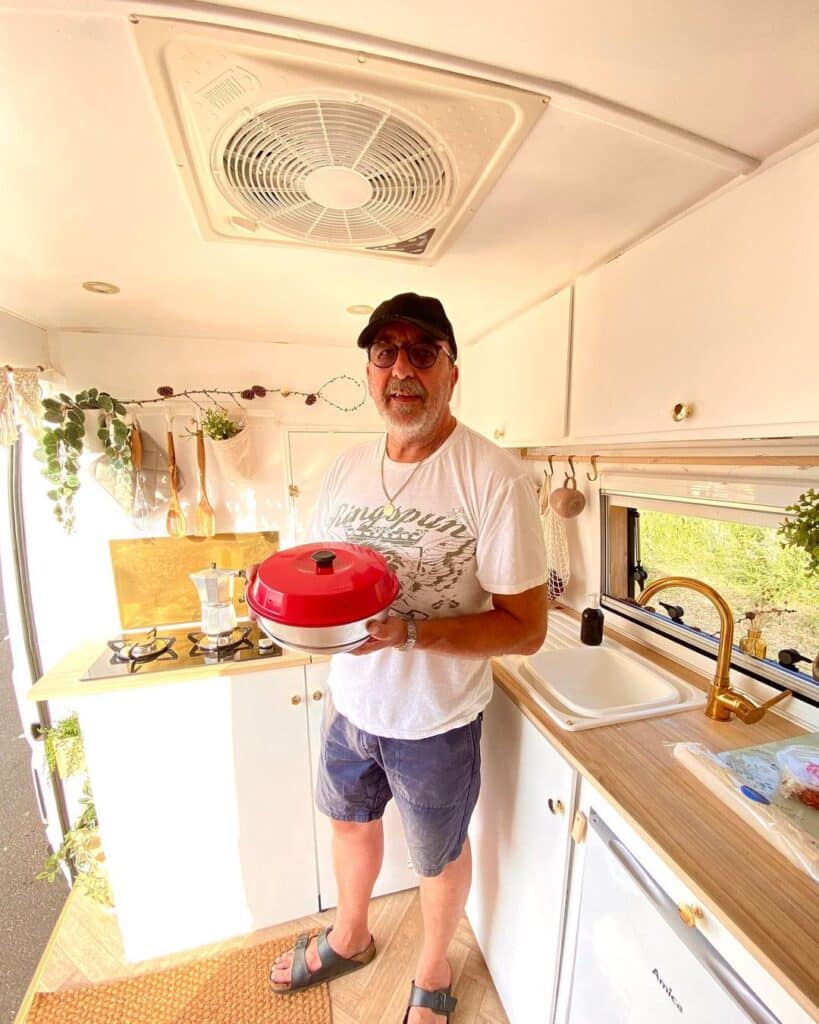
Gym memberships
Most van lifers are big fans of Planet Fitness for grabbing showers on the road. There are a few reasons for this, the first and foremost being that it’s super cheap. For about $25 per month, you can get a PF Black Card, which grants access to Planet Fitness facilities across the country (it’s worth mentioning that although Planet Fitness is a solid place to grab a shower, if you’re into lifting weights it’s not the friendliest place to work out).
If you’re like me and enjoy empty gyms, for a little bit more coinage ($38-$45 per month), you can get an Anytime Fitness membership with 24-hour access to all Anytime Fitness locations in the world. The Anytime Fitness network is extensive, and as a bonus sleeping in the parking lot is significantly less frowned upon when you’re a member.
If you find yourself in a pinch, both gym chains offer daily or weekly passes to use the facilities either for free or at a discounted rate, but make sure to call and check with the location nearest you to confirm.
Paid Showers
For van lifers who forgo a gym membership, there are still options for showering. State parks, public pools, truck stops, and campgrounds are all places where I’ve found showers in the past. Apps like iOverlander can help you pin down facilities nearby, and give you an insight into the condition and quality of the experience. These showers can run anywhere from $5 (parks and pools) to $17 (truck stops), so there’s some flexibility to how much this adds to your van life expenses. I’ve also seen shower facilities that are coin operated, though the thought of feeding quarters to the shower machine with soap in my eyes has always scared me off of those.
Read More: 10+ Easy Ways to Find Public Showers on the Road
Laundry
Laundry varies by person and preference, with the average monthly cost for most of us nomads landing somewhere between $20 and $60 a month. Most of us don’t enjoy smelling like we live on the road, and keeping your clothes clean and fresh is one of the easier ways to avoid that (even when you can’t remember the last time you showered.)
Groceries and Food
You need to buy groceries whether you live in a van or not. And keeping your camper kitchen stocked with your own food provides a sense of comfort and regularity when the only constant in your life is change.
Van life can either help you reduce your monthly food budget or force you to increase it, depending on the situation.
- On the one hand, a smaller van life fridge and less food storage space mean reduced food waste, which means a lower cost. On the other hand, we live in a society that hates single people, and smaller containers of food often cost more per unit than bulk-sized options.
- Refrigeration or electrical issues can also spring up, forcing you to throw out the contents of your refrigerator and start from scratch (don’t ask me how I know.)
My monthly budget for groceries as a solo traveler is about $300 a month, but I’ve seen couples who allot anywhere from $700 to $1,000 for groceries (the $1,000/month people usually have at least one professional chef on board, so don’t take that one too close to heart).
No matter how high-end your tastes are, there are some easy ways to save money on your food bill.
- Cook your own meals. Preparing your own meals in your van is infinitely cheaper than eating out every night.
- Buy in bulk whenever possible. Buying things like spices, grains, beans, and granola from the bulk section is often cheaper than the prepackaged variety. This also helps you live a waste-free van life.
- Meal plan in advance. Planning out your meals ahead of time helps focus your spending at the grocery store and cut down on unnecessary food waste.
Cell Phone and Internet/Wifi
Cell phone service and wifi costs are both misrepresented in van life media. What a lot of nomads bragging about how little they spend won’t tell you is that they’re on shared plans that split the cost. If you can do that, by all means, do! However, If you’re traveling solo or are otherwise not capable of sharing plans, this can make a much bigger difference than you might think in your overall van life costs.
Some shared plans from MVNOs like Verizon’s Visible are super cheap (starting at $30 a month), and offer discounts for each person you add on. If you go with a major carrier, you can expect to pay at least $60 per month for unlimited data.
Many van lifers use cellular data plans for their internet, because it’s easy to just hotspot your phone. If you need internet access all the time, you can also pick up a hotspot data plan from another carrier to get more coverage, but this adds to your monthly van life costs. This is especially important if you plan to be off-grid or away from major cities for extended periods. Hotspot plans can cost anywhere from $50/month to $140/per month.
Starlink satellite internet recently entered the scene as a legitimate option for van life internet where there’s no cell service. Starlink RV plans come with a pretty hefty entry cost of $599 for the dish, plus a monthly subscription of $110/month. The good thing about Starlink is that (so far) it seems to work everywhere as long as there’s a clear view of the sky, making it a great investment for digital nomads and folks who want to be connected wherever they go.
Pet supplies (if applicable)
Many nomads travel with dogs, cats, or other pets. Animals make excellent travel companions, and having someone to share in the adventure with you is awesome.
Vet bills, pet food/supplies, grooming, and getting a dog sitter while you check out that National Park, are all things to plan for. These van life costs can run anywhere from $30-$200 per month, depending on your pet’s needs and preferences.
The number one thing I recommend for all nomadic pet owners is pet insurance. Accidents happen, and the possibilities for mishaps only increase as you’re out and about exploring the world with your furry friend.
Paid campgrounds
Many vanlifers brag about how they “never pay for camping,” but the reality is that you should expect paid camping to play role in your van life living expenses. Sometimes you need a break, and campgrounds have some nice amenities and are much cheaper than hotels.
But how much does it cost to pay for camping? Paid campgrounds or stays at an RV park or state park can run anywhere from $10-$50 a night.
Yeah. I know.
The primary factors at play here are usually location and amenities. Resorts and higher-end campsites cost more, while state and municipal campgrounds are often cheaper options that still give you access to things like showers, trash facilities, water, and electricity.
Memberships like Good Sam, Escapees, and AARP*** offer discounts at member campgrounds, and you can always look into state park passes for additional discounts.
***Note: You don’t need to be a senior citizen to get an AARP membership, and it comes with tons of great discounts.
Other Van Life Expenses
Local entertainment (events, nightlife, state parks, etc.)
Aka, the “fun budget.” Entertainment costs vary depending on what matters most to you. If you’re big on nightlife, expect to spend upwards of $300 a month. If you’re someone who travels for concerts and festivals, the cost of entry and parking alone can be anywhere from $200-500 per event.
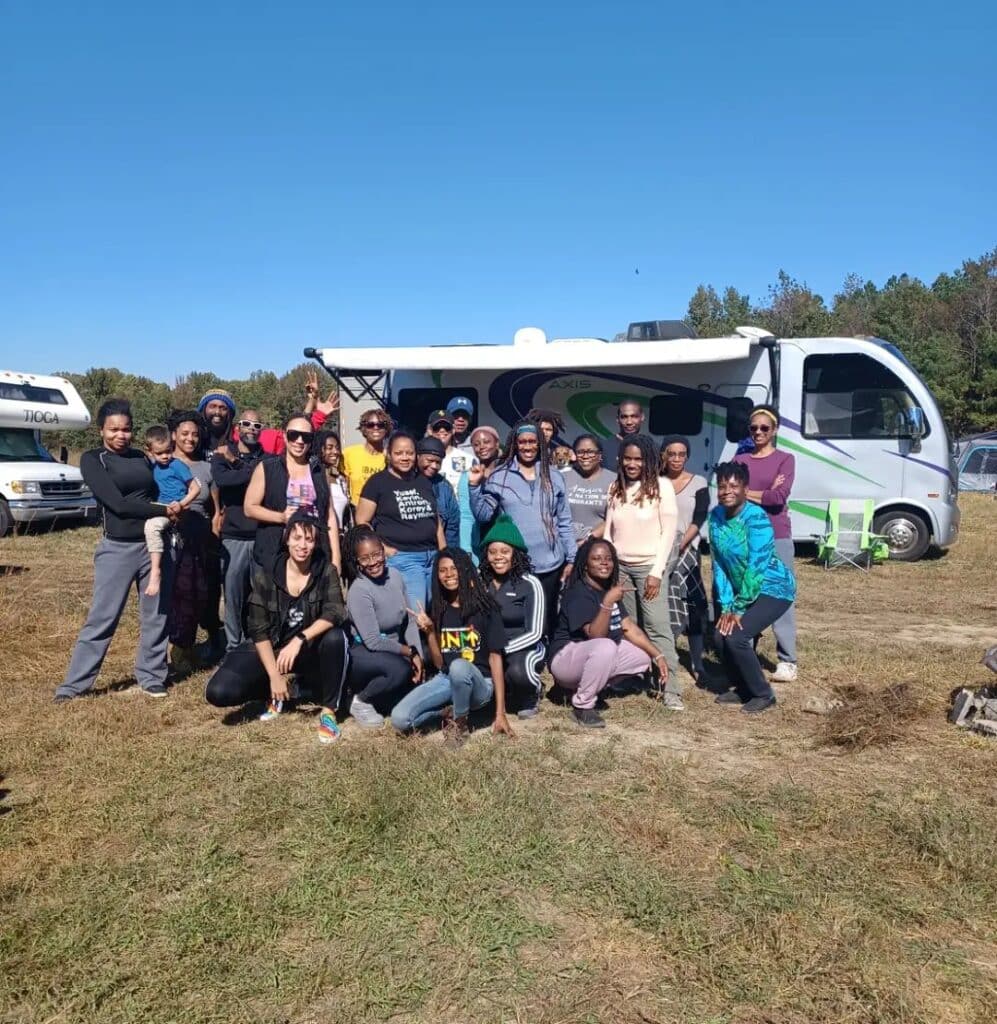
Those of us who stick to outdoor activities for entertainment can get away with spending anywhere from $50-$200 per month on entrance fees and equipment rentals.
Eating out / restaurants / coffee shops
This van life cost category varies not just per person, but per month. Some months find you far away from the nearest restaurant for weeks at a time, and others may see you bouncing around one of the foodie capitals of our nation. It’s all relative.
You can easily spend $200 and up on eating out every month, though we won’t judge you if you go over that.
Souvenirs and gifts
The upside of van life is that there isn’t a lot of room for very large or expensive souvenirs. Most of us collect things like stickers, magnets, and patches as small mementos of the places we’ve been. Postcards and other trinkets make cute van life gifts from the road for loved ones back home. If you budget about $50 a month for these things, you should be in a good spot!
Health insurance
Health insurance is a tricky subject in the US, and costs can vary widely. If you happen to have a job that furnishes health insurance for you, I advise you to keep it as long as you can. Accidents happen, and nothing kills an adventure more than hefty medical bills.
If you don’t have an employer-sponsored health insurance plan, then there are a few options. You can hop on your state’s ACA health insurance exchange, but these plans don’t usually work outside your state of residence in non-emergencies. You can go with a short term health insurance plan or indemnity plan, or a healthshare ministry. If you have a lower income, you may be eligible for Medicaid.
Costs for health insurance depend on so many factors that it’s tough to give an estimate. But it could cost you anywhere from $100 per month on up to $600+ for a single person.
Read More: Van Life How To (Health Insurance Section)
Surprise Costs
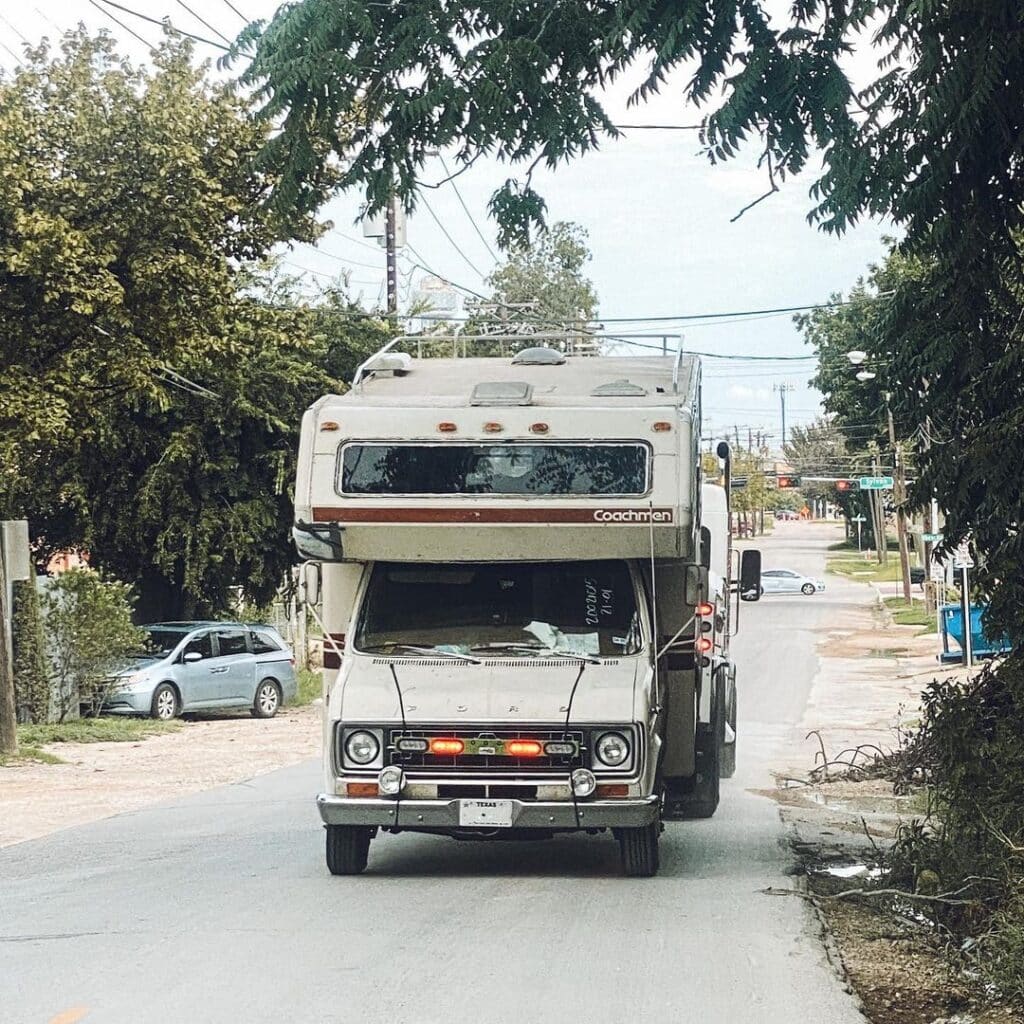
It’s always smart to save money for a rainy day, and van life is no exception. Mechanical issues, once-in-a-lifetime opportunities, broken appliances, and mental health hotel stays are all van life costs that you can’t plan for. Keeping a surprise cost fund can make sure that life happening to you on the road doesn’t stall your adventure.
Annual/Seasonal Expenses and Gear
Entertainment (National Parks Pass, ski passes, surf rentals, etc.)
Ski Passes, National Parks Passes, etc., provide extended access to entertainment. An America The Beautiful National Parks annual pass costs $80 per year, and grants fee-free access to any National Park in the U.S.
Ski passes can run anywhere from $699 – $1229, depending on the resort family. Surfing is generally free to do, but boards can cost anywhere from $200-$1000. If you have a favorite activity, seasonal or not, check to see if there’s a pass that will grant you access to multiple opportunities to engage in your passions!
Gear can become pricey, and while living in a van, there’s often no space for much of it. Renting can be a cheaper option than purchasing outright, though if you opt to own your gear, you may eventually need to budget for a storage unit.
Vehicle registration and/or inspection fees
Depending on where you live, registration and inspection may be annual or valid for several years at a time. These fees vary wildly from state to state, so it’s best to check in and make sure that you keep your tags current as you traverse the country.
Roadside Assistance
For $80/month, you can purchase a basic Good Sam Roadside membership, which, in my opinion, is always a good thing to have. You can also opt to pay the entire membership upfront, which saves time and money down the line. Similarly, AAA offers memberships ranging in price from $57 to $117 per year, with each tier offering different tow distances and benefits.
Shopping around is always a good idea, but please, for the love of all that is green on this Earth, do not hit the road without roadside assistance.
Your Vanlife Costs are Customizable

At the end of the day, the amount of money you spend on van life is up to you. While inflation has the cost of just about everything on the rise, one of the joys of van life is that you can customize your expenses. Start-up costs are most likely going to be the most expensive part of transitioning to this lifestyle, but there are plenty of ways to soften the hit to your pocketbook, depending on how much time you have.
Take a look at our article on turning your belongings into cash if you’re looking for a way to make your current life fund your new one.
Once you’ve got your initial costs squared away, understand that you can adjust your camping preferences and travel pacing to suit your budget, not the other way around. Once you’re off traveling, there are tons of ways to make money on the road and make sure that there’s always gas in the tank.
However you keep the cash flowing, and whatever your budget looks like, remember that in the grand scheme of things, van life is about the experience. If you stay safe and prioritize doing things that bring you joy, ultimately, it’ll pay for itself.
Van Life Cost FAQ
How much does van life cost?
The actual cost of van life varies heavily based on your travel patterns, lifestyle, and personal needs. At a minimum, expect to budget $1,000 to $2,000 per month if you’re single, and more if you’re a couple.
Is it cheaper to live in a van or an apartment?
Living in a van is typically cheaper, but it really depends on your spending habits.
Rent is very expensive, especially in coastal cities, so moving into a van might seem like a great way to save money. But van life is not a magic bullet to solving your financial problems. You can spend a lot of money buying and setting up your rig, and ongoing costs like gas, camping, maintenance and repairs can eat up any savings over an apartment.
You can make van life cheaper by driving less, doing as much as your own mechanical work as possible, and relying on free campsites.
How much money do you need to make for van life?
The great thing about van life is that the costs are under your control much more than when you live in a stationary dwelling. This means you’re not as reliant on a specific amount of income.
That being said, it’s generally a good idea to spend no more than 30% of your income on rent. If we consider excess gas, maintenance and repair costs, as well as camping costs as the “rent” of van life, then you need enough income to cover that while still allowing for other expenses, savings, and emergencies.
For example, if all of this totals up to $800 per month, then you would need to make at least $2,666 per month to sustain yourself comfortably ($800 / 0.30 = $2,666).
Do you have to pay taxes if you live in a van?
Everyone needs to pay taxes, no matter where or how you live. Even if you live in a camper van full time, you will still owe federal income taxes, as well as state income taxes to your state of domicile.


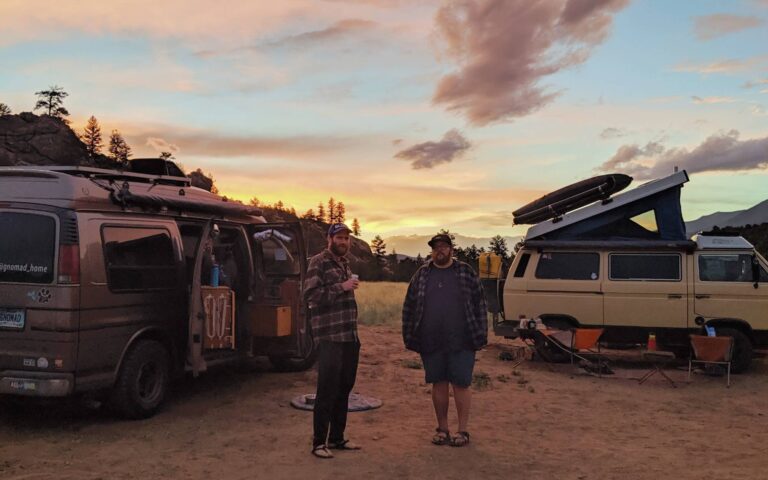
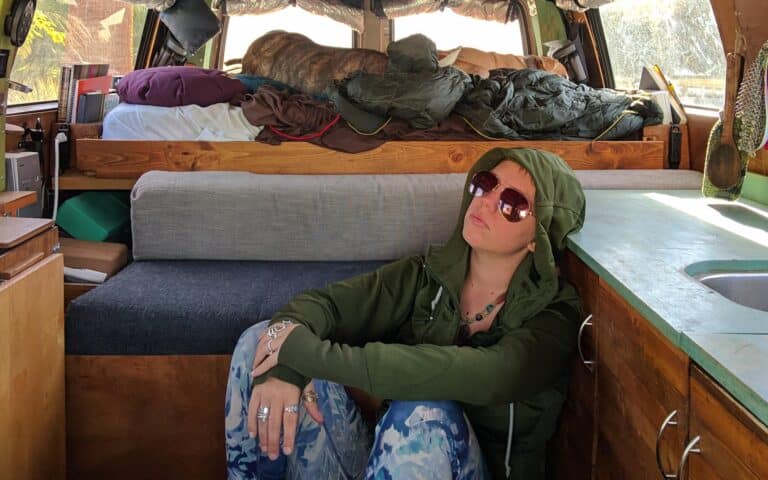


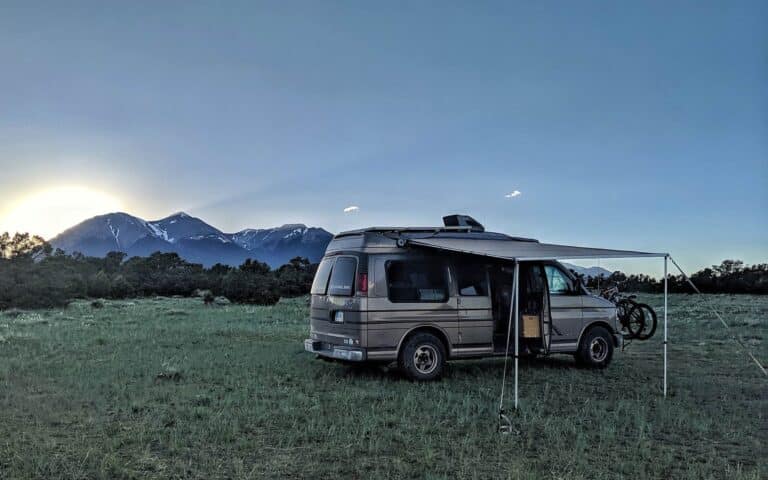
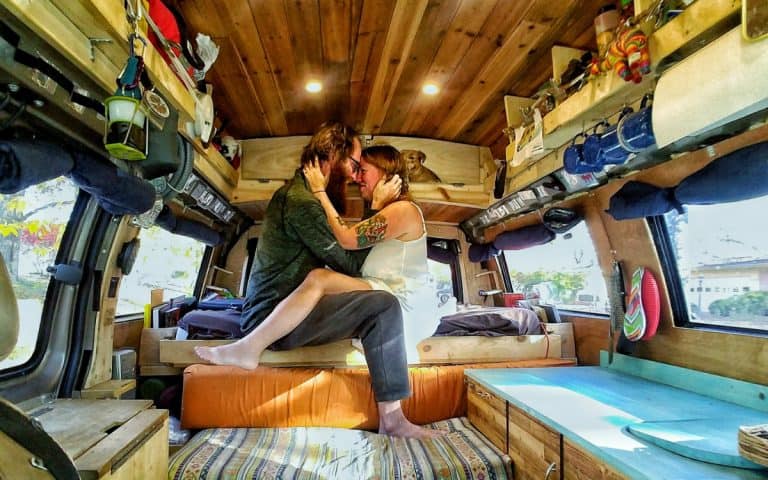
Thanks for this in depth share! I’m thinking about van-lifing and this was very helpful!
Glad it was helpful Sarah!